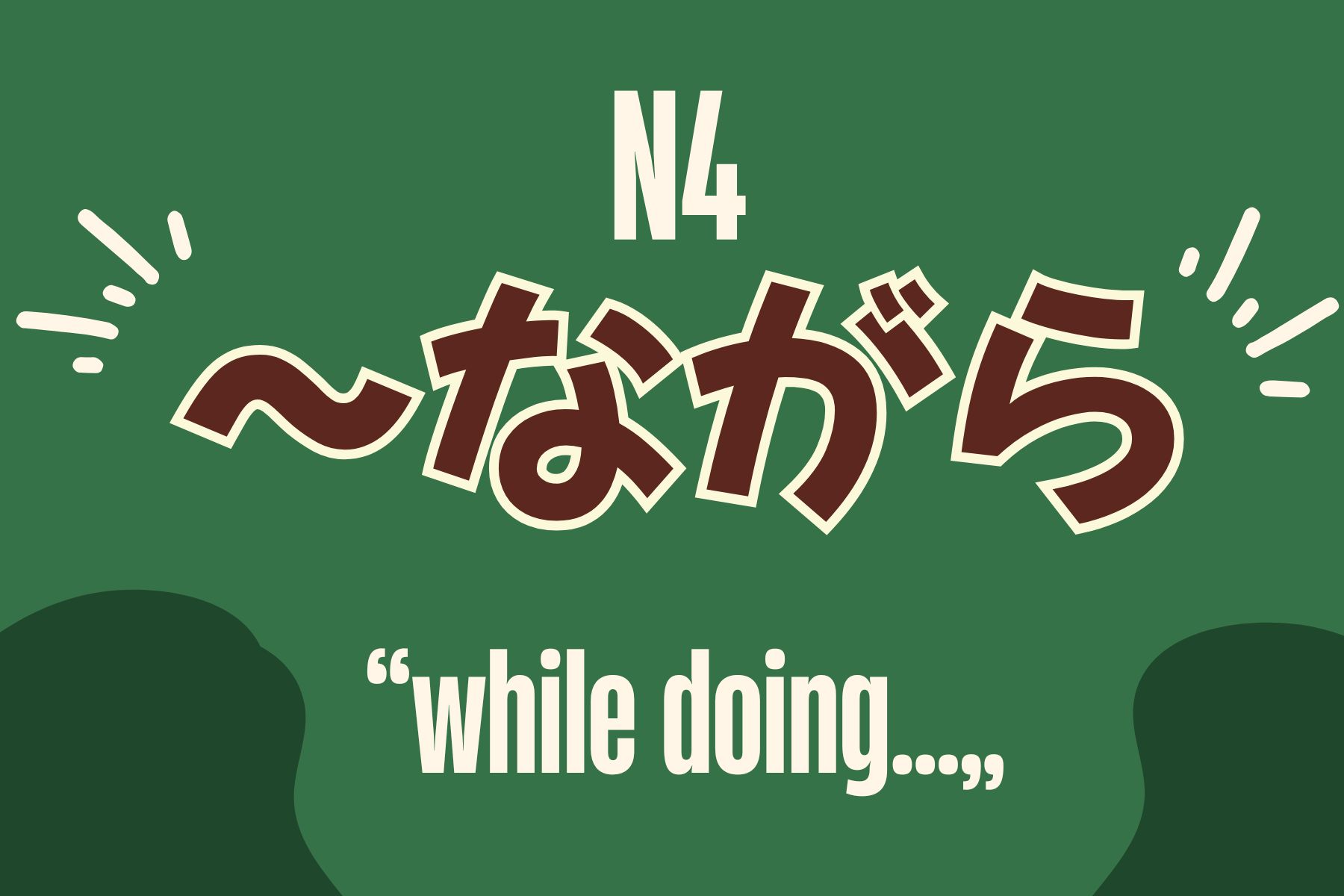想要一邊聽音樂、一邊讀書嗎?這時候日文的「~ながら」文法就派上用場啦!今天這篇文章要帶你輕鬆學會「~ながら」,讓你在日常生活中能自然地表達「一邊做 A,一邊做 B」的情境。
Do you want to say “listening to music while studying” in Japanese? That’s exactly when the grammar pattern 「~ながら」 comes in handy! In this post, we’ll break it down in a fun and simple way so you can start using it in your daily conversations.
2. 文型解說
格式(Form)
動詞ます形去掉「ます」+ながら
👉 Example: 食べます → 食べながら
意思(Meaning)
表示「同時進行」,中文就是「一邊……一邊……」。
It means doing two actions at the same time, like “while doing…”.
接續方式(How to attach)
- 只能接在動詞後面(去掉「ます」)。
- 前後兩個動作通常是同一個人做的。
常見搭配詞(Common collocations)
音楽を聴きながら → while listening to music
テレビを見ながら → while watching TV
歩きながら → while walking
例句練習表格
| 日文 | 中文 | English |
|---|---|---|
| 音楽を聴きながら勉強します。 | 我一邊聽音樂一邊讀書。 | I study while listening to music. |
| 携帯を見ながら歩くのは危ないです。 | 一邊看手機一邊走路很危險。 | It’s dangerous to walk while looking at your phone. |
| コーヒーを飲みながら友達と話しました。 | 我一邊喝咖啡一邊和朋友聊天。 | I chatted with my friend while drinking coffee. |
| 日本語を勉強しながら、英語も練習しています。 | 我一邊學日文一邊練習英文。 | I study Japanese while also practicing English. |
文法重點小結
重點整理
- 「~ながら」=「一邊…一邊…」。
- 動詞用「ます形去掉ます」+ながら。
- 前後動作同一個人完成。
Key Takeaways
- 「~ながら」 means “while doing ~”.
- Attach it to the verb stem (without ます).
- The subject of both actions is usually the same person.
延伸閱讀建議
想要更靈活地表達時間或同時性?可以搭配以下文法一起學:
- 「~ている」:表示動作正在進行(👉 [連結到~ている文章])
- 「~間(あいだ)」:表示在某段時間裡(👉 [連結到~間文章])
- 「~つつ」:更書面、正式的「一邊…一邊…」(👉 [連結到~つつ文章])



